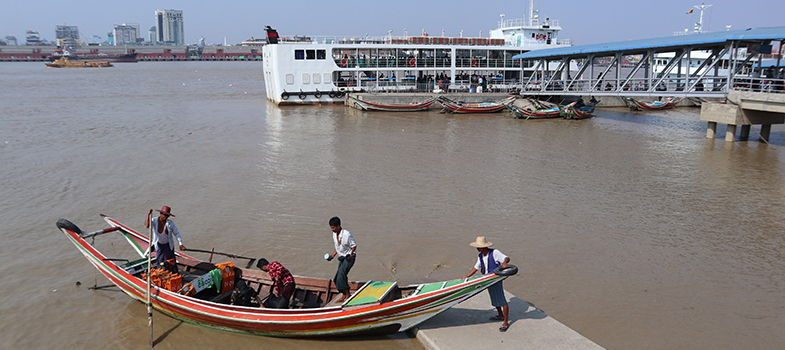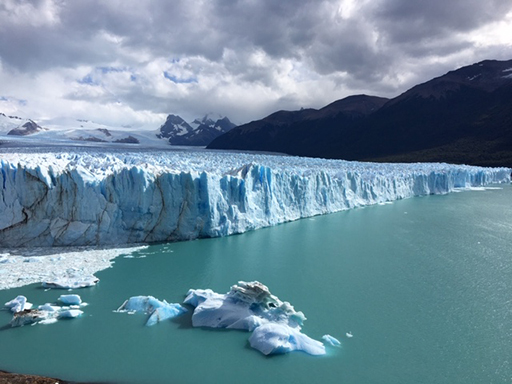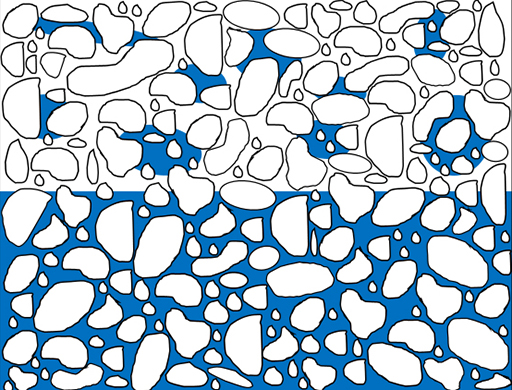1.2 What are water resources?
A natural resource is something that comes from the natural environment that people can use. Water is a natural resource, as is air, coal, oil and natural gas, among others. Water resources come in many forms, but the three main categories are saltwater, groundwater and surface water.
The major uses of water are agricultural, industrial and domestic use.
Natural resources like water are not only used by people, but by all living things that require water to grow and reproduce. 97% of the water on the Earth is saltwater and only 3% is fresh water, and it is this fresh water that is vital for people and other living organisms’ survival and health. Of this 3%, slightly over two thirds is frozen in glaciers like in Figure 1 and the polar ice caps and so is not easily accessible. The remaining less than 1% of unfrozen freshwater is what is available for use.
Question 1
a.
57%
b.
63%
c.
68%
d.
71%
The correct answer is d.
Feedback
Earth is a very wet planet. Water covers 71% of its surface in oceans and seas. Were you close in your estimate?
Accessible fresh water is in the form of surface water and groundwater. Water from precipitation (rain, snow, hail, sleet) falls on the land and runs over the surface collecting in rivers, streams and lakes, and ultimately drains into oceans. This is called surface water.
But sometimes the water that falls as precipitation, instead of running over the surface, begins to interact with the land, in particular the soil, infiltrating the soil, percolating (slowly trickling downwards) through the soil layers, rocks and sediment, deeper and deeper until it reaches conditions where the rocks are already very wet, or saturated, where it becomes groundwater.
The top of the groundwater is called the water table. Groundwater is fresh water located in the subsurface pore space of soil and rocks. It is also water that is flowing within aquifers below the water table. Aquifers are sections of soil and rock that hold groundwater (like rocky sponges). Water can be taken from the aquifer to the surface using wells and pumps.
Question 2
a.
Surface water
b.
Groundwater
The correct answer is b.
Answer
Groundwater is fresh water located in the subsurface pore space of soil and rocks that collects within aquifers.
Question 3
There are two types of aquifers: an unconfined aquifer and a confined aquifer. An unconfined aquifer is where water seeps from the ground surface directly into the aquifer. A confined aquifer is where an impermeable rock layer prevents water from seeping into the aquifer from the ground surface directly above it. Instead, water travels down and across and eventually seeps into an unconfined aquifer farther away where the impermeable layer does not exist, often travelling large distances.
Question 4
a.
A confined aquifer
b.
An unconfined aquifer
The correct answer is b.
Feedback
An unconfined aquifer potentially gives the cleaner water because it has travelled less far, and therefore is less likely to be contaminated.
Sometimes it is useful to make a distinction between groundwater that is closely associated with surface water in rocks and soils, and deep groundwater, which is an ancient body of water that has been contained in some undisturbed space, such as subglacial lakes or aquifers, and may have laid there for millennia (sometimes called fossil water).
The level of the water table varies not only across the planet, but also in any one place, fluctuating up and down depending on the season, climatic conditions and pressure from people. People can pump groundwater for agriculture, industry or domestic use. In areas that have shallow water tables (near the surface), sometimes the water table connects to the lakes and rivers.
Question 5
a.
To be deep
b.
To be near the surface
The correct answer is a.
Feedback
In very dry areas, the water table is deep because any water that falls on the land seeps through the dry rocks and sediments a long way before it finds saturated rocks, the water table. In wet areas, there is a lot of precipitation, which means the soil and rocks get saturated nearer the surface. Therefore, the water table is higher.
A further distinction is between renewable water resources and non-renewable water resources. Renewable water resources are rechargeable due to the hydrological cycle (water cycle), unless they are overexploited, comprising groundwater aquifers and surface water like rivers and lakes. Non-renewable water resources are not replenished at all or not for a very long time. This includes the so-called fossil waters.
1.1 Introduction


